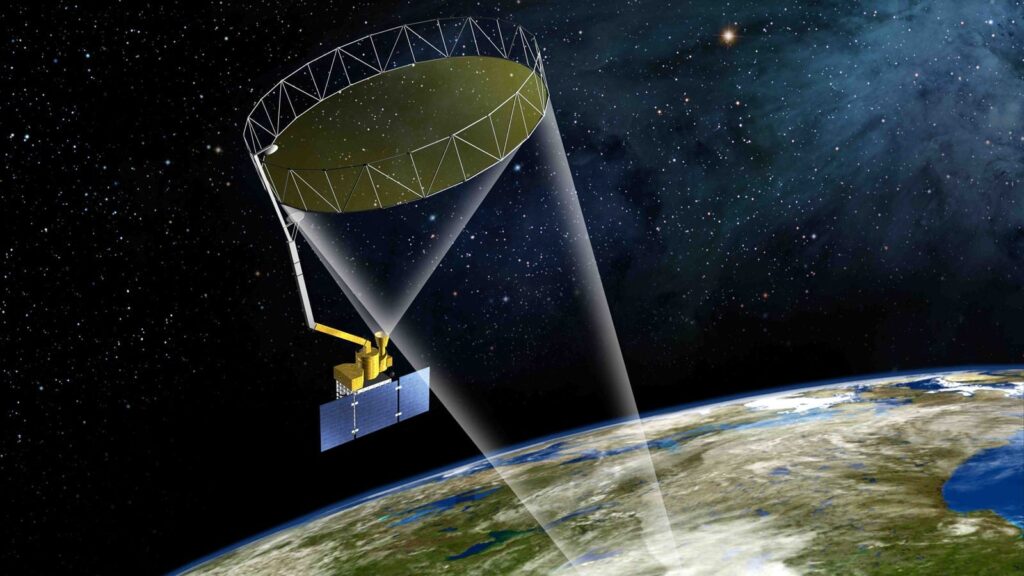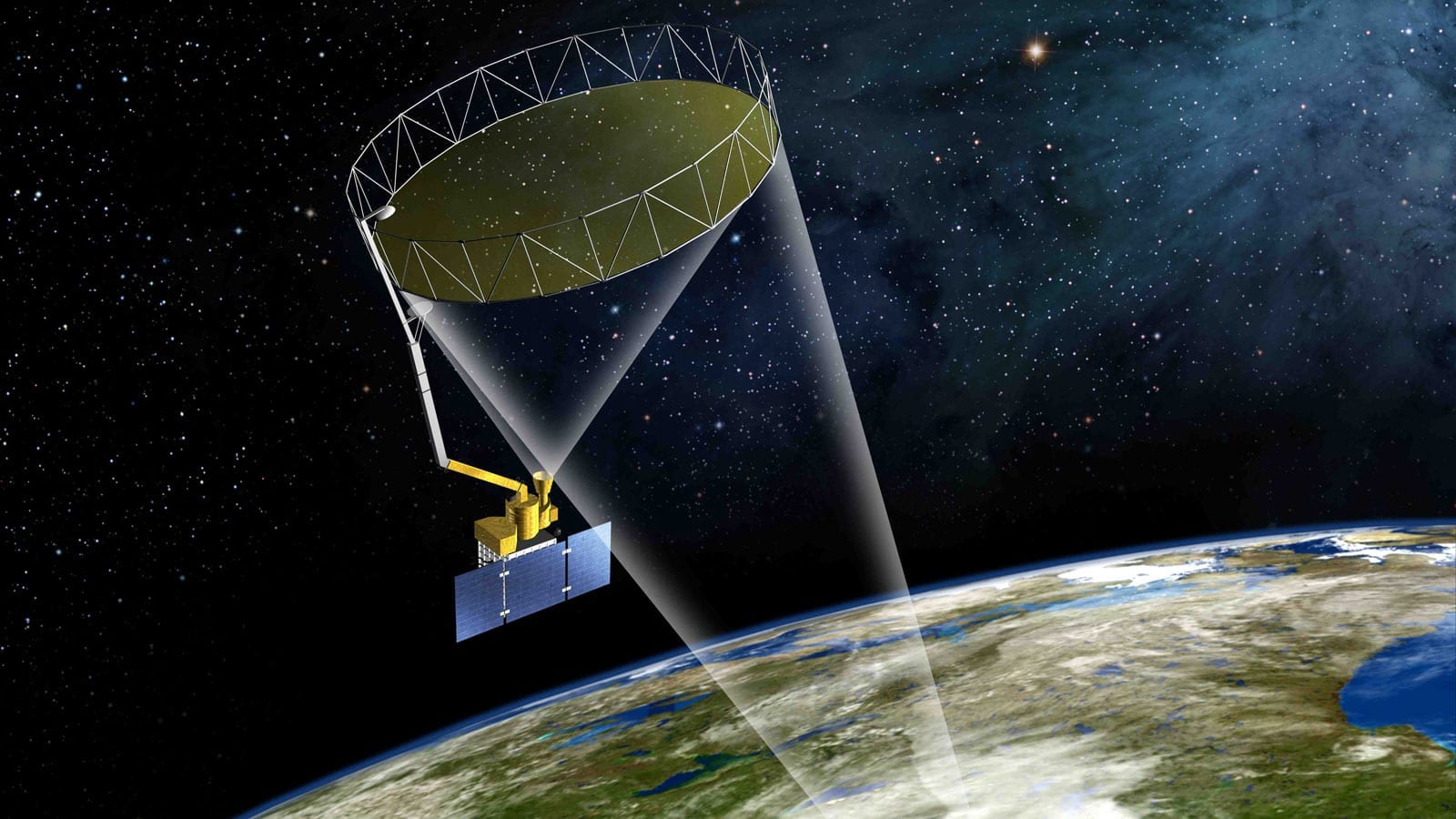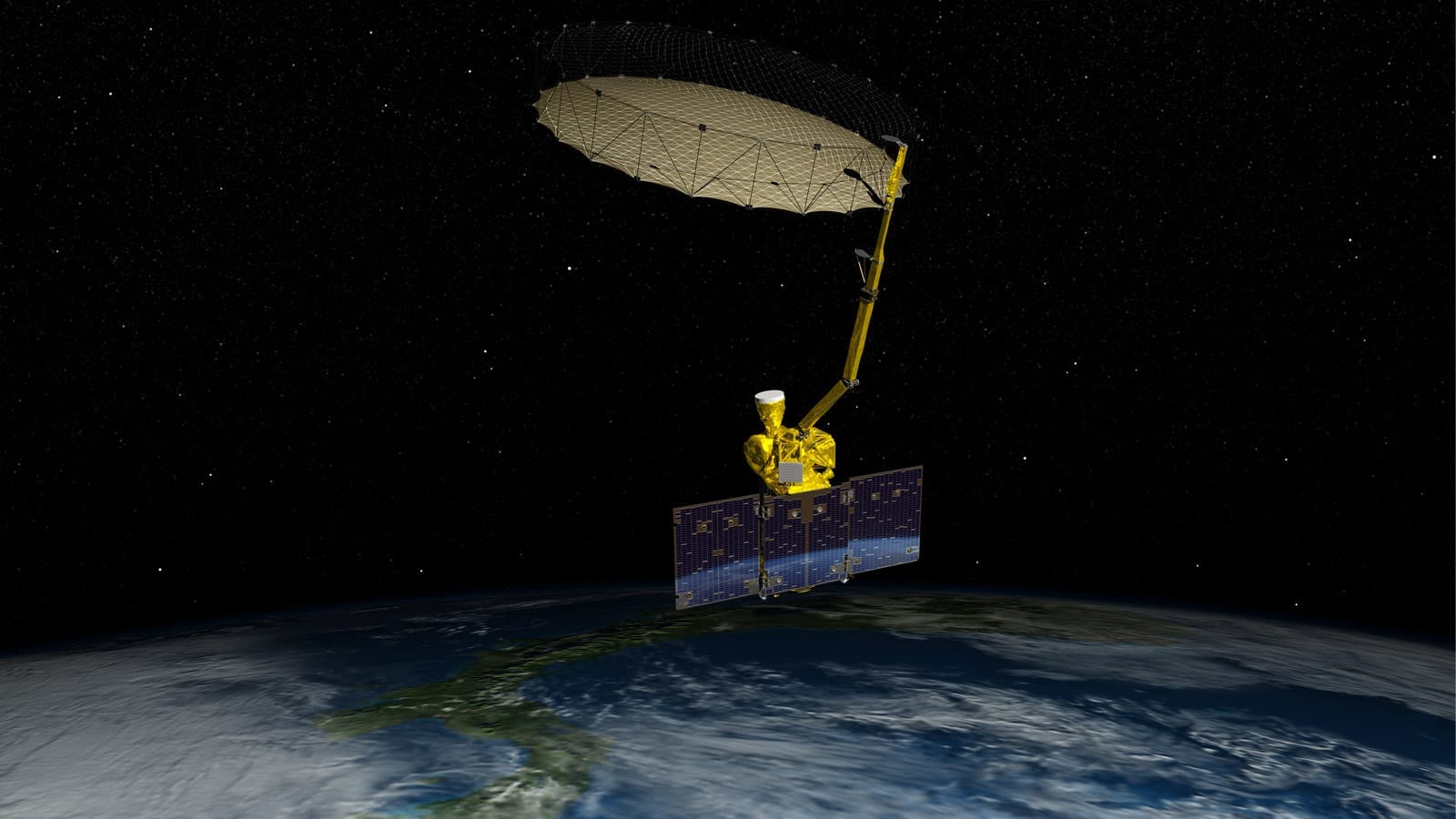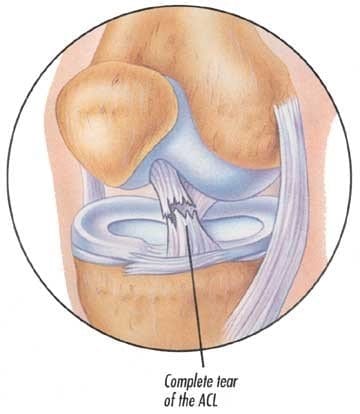
Scheduled for launch on Jan. 29, 2015, NASA’s Soil Moisture Active Passive (SMAP) instrument will measure the moisture lodged in Earth’s soils with an unprecedented accuracy and resolution. The instrument’s three main parts are a radar, a radiometer and the largest rotating mesh antenna ever deployed in space.
Remote sensing instruments are called “active” when they emit their own signals and “passive” when they record signals that already exist. The mission’s science instrument ropes together a sensor of each type to corral the highest-resolution, most accurate measurements ever made of soil moisture — a tiny fraction of Earth’s water that has a disproportionately large effect on weather and agriculture.
To enable the mission to meet its accuracy needs while covering the globe every three days or less, SMAP engineers at NASA’s Jet Propulsion Laboratory in Pasadena, California, designed and built the largest rotating antenna that could be stowed into a space of only one foot by four feet (30 by 120 centimeters) for launch. The dish is 19.7 feet (6 meters) in diameter.
“We call it the spinning lasso,” said Wendy Edelstein of NASA’s Jet Propulsion Laboratory, Pasadena, California, the SMAP instrument manager. Like the cowboy’s lariat, the antenna is attached on one side to an arm with a crook in its elbow. It spins around the arm at about 14 revolutions per minute (one complete rotation every four seconds). The antenna dish was provided by Northrop Grumman Astro Aerospace in Carpinteria, California. The motor that spins the antenna was provided by the Boeing Company in El Segundo, California.
“The antenna caused us a lot of angst, no doubt about it,” Edelstein noted. Although the antenna must fit during launch into a space not much bigger than a tall kitchen trash can, it must unfold so precisely that the surface shape of the mesh is accurate within about an eighth of an inch (a few millimeters).
The mesh dish is edged with a ring of lightweight graphite supports that stretch apart like a baby gate when a single cable is pulled, drawing the mesh outward. “Making sure we don’t have snags, that the mesh doesn’t hang up on the supports and tear when it’s deploying — all of that requires very careful engineering,” Edelstein said. “We test, and we test, and we test some more. We have a very stable and robust system now.”
SMAP’s radar, developed and built at JPL, uses the antenna to transmit microwaves toward Earth and receive the signals that bounce back, called backscatter. The microwaves penetrate a few inches or more into the soil before they rebound. Changes in the electrical properties of the returning microwaves indicate changes in soil moisture, and also tell whether or not the soil is frozen. Using a complex technique called synthetic aperture radar processing, the radar can produce ultra-sharp images with a resolution of about half a mile to a mile and a half (one to three kilometers).
Read more: Technology Innovations Spin NASA’s SMAP into Space
The Latest on: SMAP
[google_news title=”” keyword=”SMAP” num_posts=”10″ blurb_length=”0″ show_thumb=”left”]
via Google News
The Latest on: SMAP
- Obituaries PGe PG Store Archives Classifiedson May 17, 2024 at 10:03 pm
Republicans on the House Agriculture Committee released their proposed farm bill Friday morning amid an intense divide with ...
- SubCo to upgrade Australian subsea cable systemon May 17, 2024 at 9:08 am
The cable spans roughly 5,000km, was supplied by Alcatel Submarine Networks, and was installed by Optic Marine Systems. SMAP was originally designed with twelve fibre pairs, but SubCo has now upgraded ...
- 'Glowing' Plants Give Flash Drought Warning, NASA Video Revealson May 17, 2024 at 9:06 am
A strange uptick in plant fluorescence came at the same time soil moisture began to plummet in the U.S., indicating flash drought.
- SubCo upgrades upcoming SMAP subsea cable systemon May 17, 2024 at 3:48 am
SubCo has upgraded the planned capacity of its upcoming SMAP subsea cable system in Australia. The cable, first announced by SubCo in 2023, is set to be operational in Q1 2026 and connect Sydney, ...
- Singapore launches initiatives championing legacy and sustainability for No.2 destination in new ICCA City Rankingson May 17, 2024 at 12:41 am
The Singapore Tourism Board (STB) launched a number of initiatives at IMEX in Frankfurt in May, all designed to raise sustainability standards across the meetings industry. A Legacy Toolkit and a ...
- Plants emit a faint ‘glow’ when flash droughts are imminenton May 15, 2024 at 12:36 pm
NASA uses satellite data to detect plant fluorescence and predict flash droughts in advance. This helps farmers prepare resources better.
- SUBCO expands Sydney to Perth cable system plan capacityon May 15, 2024 at 7:00 am
Bevan Slattery-founded subsea fibre cable infrastructure provider SUBCO has increased total system capacity for its upcoming SMAP submarine cable system by 33 per cent. The cable, which connects ...
- How 'glowing' plants could help scientists predict flash droughton May 14, 2024 at 12:04 pm
An unusual boost in plant productivity can foreshadow severe soil water loss, and NASA satellites are following the clues.
- Understanding the Role of ‘Glowing’ Plants in Foreseeing Sudden Drought Eventson May 14, 2024 at 10:02 am
Researchers leverage plant fluorescence signals as an early warning system for preventing the rapid onset of soil water depletion. One notable example of a sudden and severe water deficit occurred in ...
- User Notice: SMAP L4 Data Reprocessedon May 8, 2024 at 9:42 am
The SMAP Level 4 data sets, available at the NASA National Snow and Ice Data Center Distributed Active Archive Center (NSIDC DAAC), were reprocessed from 1 Nov 2023 through the present aft ...
via Bing News












